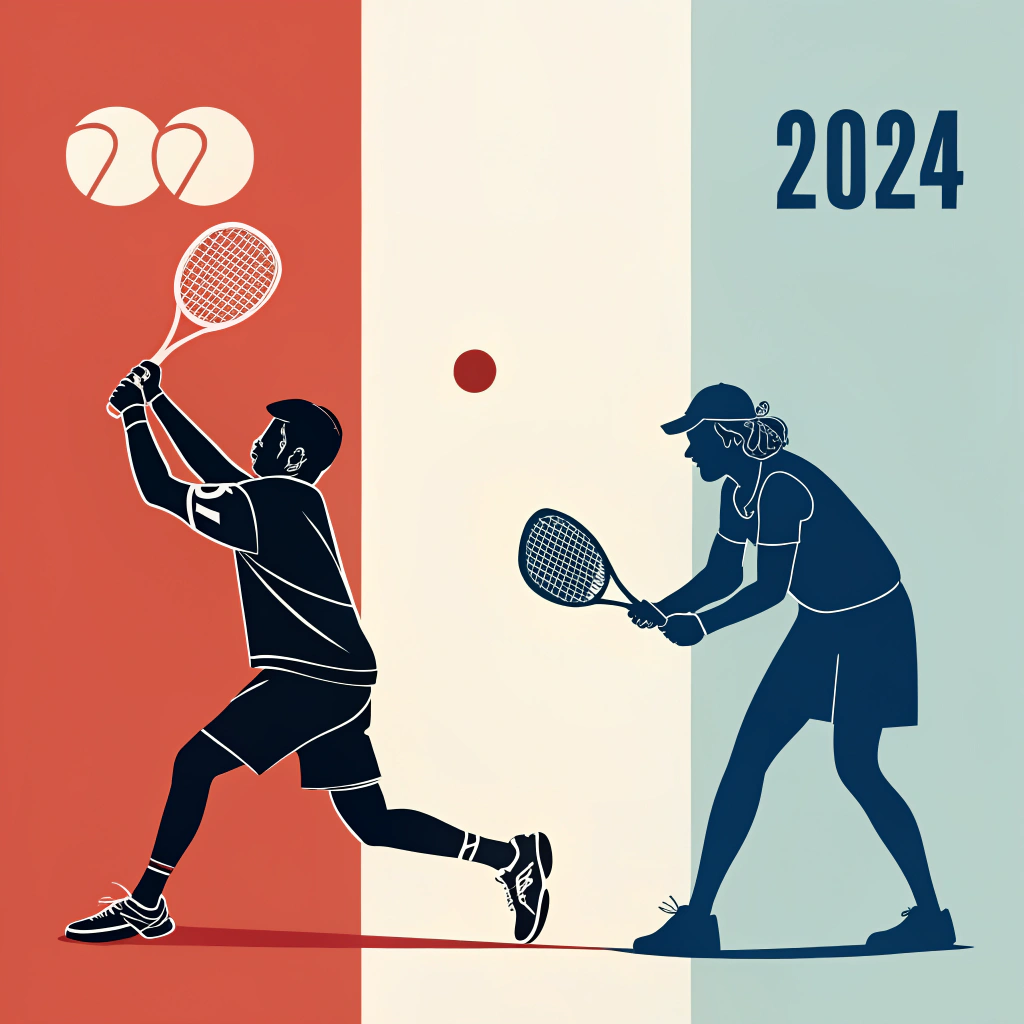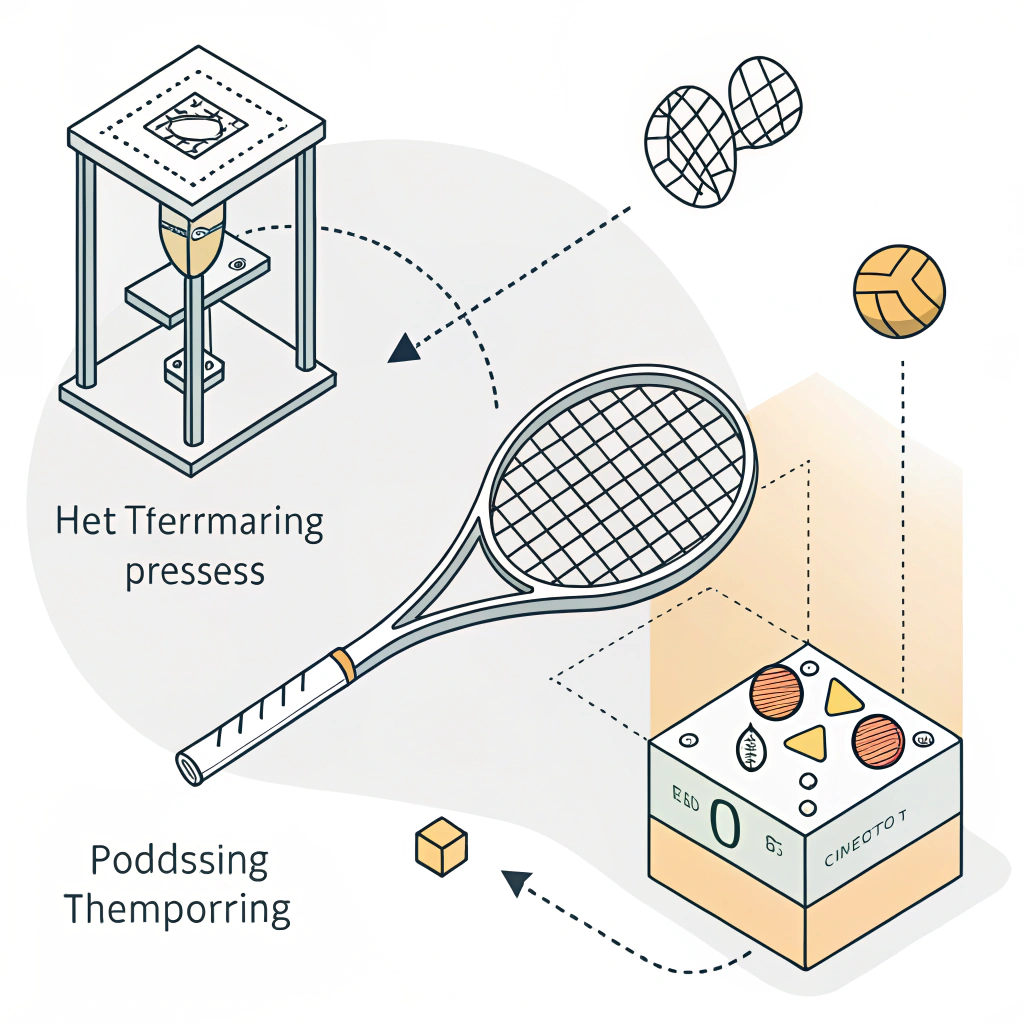Pickleball's rapid growth challenges traditional tennis culture by offering a more accessible, fast-paced game that appeals to a broad audience, yet it also raises concerns among classic tennis enthusiasts regarding physical intensity and game traditions.
In recent years, a significant sports culture clash1 has emerged between traditional tennis and the rising phenomenon of pickleball. While tennis boasts long-established traditions and a dedicated fan base, pickleball is rapidly evolving into a mainstream contender with a 311% participation surge over the last three years. This article examines the technical, cultural, and market dynamics driving this evolution, exploring why traditional tennis fans might feel disconnected and what this means for the broader sports industry.
Pickleball's explosive growth is not accidental. Key factors contributing to its popularity include the game's simplicity, lower physical demands compared to tennis, and the increasing interest among younger players. According to recent statistics, the average player age is lowering, suggesting that this sport is capturing a new generation's attention. The lower entry barrier makes pickleball appealing for diverse groups, including recreational enthusiasts and competitive players seeking fast-paced action.
Market trends in sports show that pickleball is not only a recreational activity but also an emerging market segment for sports equipment and facilities. Despite criticisms regarding its lower physical activity level, the sport is carving out a niche based on accessibility, community building, and innovative gameplay. This rapid expansion has significant implications for companies involved in producing and supplying sports equipment, including manufacturers like NEX Pickleball, who are at the forefront of innovation in paddle production.
Traditional tennis carries a rich legacy, evolving over decades through a blend of athleticism, strategy, and refined etiquette. The fan base differences reflect deeply rooted values where intensity and high-level physicality are prized. Many long-time tennis enthusiasts assert that sports should demand a high level of physical exertion, and they sometimes view pickleball — with its less strenuous nature — as lacking in these qualities.
Conversely, pickleball's appeal lies in its community-driven, inclusive atmosphere, allowing players of various ages and skill levels to participate. This divergence in philosophy has led to a cultural split where tennis purists perceive pickleball's rise as a dilution of sporting rigor. However, the lower physical threshold of pickleball is precisely what has fueled its widespread popularity, making it accessible to seniors and individuals seeking a less intense, yet highly engaging, game.
A significant part of the discussion revolves around the technical differences between the sports, specifically the equipment employed. Tennis rackets and pickleball paddles are designed with distinct performance characteristics, reflecting the unique demands of each game.
For instance, manufacturers like NEX Pickleball use advanced production techniques—hot pressing2, cold pressing, and thermoforming3—to create high-performance paddles with superior durability and control. Below is a comparative analysis of these production processes:
| Production Process | Advantages | Disadvantages |
|---|---|---|
| Hot Pressing | High production efficiency; yields strong, impact-resistant paddles | Can alter material properties; requires significant equipment cost |
| Cold Pressing | Precise control over thickness; maintains material properties intact | Longer production cycle; demands high-quality machinery |
| Thermoforming | Enables intricate designs; ensures precise material distribution | Longer production time; higher equipment investments |
The table highlights that while each process has its merits, the choice of method depends on the desired performance characteristics. Pickleball paddles are often engineered using advanced composite materials4 that combine benefits from carbon fiber and fiberglass, delivering a balance of strength, flexibility, and shock absorption. This technical innovation parallels the broader evolution of racket sports, where racket sports evolution becomes key for attracting modern players.
The sports market is witnessing a competitive dynamic5 where traditional sports like tennis must adapt to the shifting interests of sports enthusiasts. The rapid adoption of pickleball has prompted tennis clubs, equipment suppliers, and event organizers to reconsider their offerings and strategies. While tennis remains an elite sport with a storied history, the emerging pickleball market represents an exciting opportunity for growth and innovation.
The discrepancy in physical demands becomes a point of contention. Critics often claim that sports should involve intense physical activity, a benchmark where tennis traditionally excels. Yet, comparisons with other less physical sports — such as archery, bowling, and even golf — reveal that different sporting experiences offer unique benefits and cater to different audiences. This reveals that the debate is less about athletic rigor and more about differing consumer demands and recreational preferences.
For businesses, understanding these trends is crucial. Equipment manufacturers must invest in R&D to produce equipment that meets the evolving needs of modern athletes. NEX Pickleball’s commitment to leveraging advanced production processes ensures that their paddles provide optimal performance, addressing both the technical and cultural demands of today's game players.
The innovation in materials and processes is not just about product performance but also about adapting to market demands swiftly. Customization options, such as adjustable paddles tailored to different playing styles, are becoming increasingly popular. This strategy aligns with the market's shift towards personalized sporting equipment, where fan perception and player feedback play significant roles.
B2B decision-makers in the sports equipment sector need to align their strategies with market trends. The evolution from traditional tennis to pickleball is not a zero-sum game; rather, it highlights the diversification of sports preferences among consumers. Decision-makers should consider the following strategic actions:
- Market Analysis: Regularly monitor participation trends and consumer feedback across both tennis and pickleball arenas. Investing in market research helps in predicting future shifts.
- Diversification of Product Lines: Expanding product portfolios to include both high-performance tennis rackets and advanced pickleball paddles can cater to a broader customer base.
- Emphasis on R&D: Technological advancements in material science and production processes, such as those utilized by NEX Pickleball, should drive innovation and product differentiation.
- Customized Solutions: Providing customizable and on-demand print services can enhance customer engagement and brand loyalty, catering to individual preferences and regional trends.
Leveraging consumer insights and data analytics is key to navigating this sports culture evolution. Decision-makers should prioritize investments that give real-time understanding of practice patterns, game pace, and consumer sentiment. Data-driven strategies offer a competitive edge by identifying emerging market segments and informing product development decisions.
The sports equipment sector is witnessing rapid evolution, and businesses that adapt quickly will dominate future market share. Recognizing the strengths and evolving consumer priorities in both tennis and pickleball, companies can better serve diverse customer needs while maintaining a competitive edge.
The debate over tennis versus pickleball is ultimately about divergent consumer expectations, technical advancements, and cultural values. Traditional tennis represents a sport with high intensity and long-established traditions, while pickleball offers an accessible, community-oriented experience that is rapidly gaining popularity. For B2B professionals and decision-makers, understanding these dynamics is essential for future-proofing their business strategies.
By analyzing market trends, adapting product lines, and investing in advanced production techniques, companies can bridge the gap between tradition and innovation. NEX Pickleball, with its commitment to quality, performance, and customized production processes, exemplifies how embracing these changes can lead to success in a rapidly evolving sports market.
In summary, the rise of pickleball reflects a broader transformation within the sports industry. Far from undermining traditional sports, it opens avenues for complementary growth through diversification and innovation. As the market evolves, the ability to cater to both established and emerging consumer bases will determine the future leaders in the industry.
Q: Why is pickleball not respected?
A: Some critics argue that pickleball lacks the intense physical activity found in sports like tennis and badminton. However, many other sports are less physically demanding, and pickleball’s appeal lies in its accessibility and community-driven approach.
Q: Is pickleball losing its popularity?
A: No, pickleball is experiencing remarkable growth with a 311% increase in participation over the last three years, making it one of the fastest-growing sports in America, with a trend toward attracting younger players.
-
sports culture clash: Read the linked article to explore the contrasting cultural values between traditional and emerging sports, providing insights into how differing traditions affect market dynamics. ↩ ↩
-
hot pressing: Click through to understand the hot pressing process, its benefits in manufacturing high-performance sports equipment, and its impact on product durability and quality. ↩ ↩
-
thermoforming: Learn more about thermoforming techniques and how they enable intricate designs and precise material distribution in the production of sports gear. ↩ ↩
-
composite materials: Discover how composite materials enhance the performance of sports equipment by combining strength, flexibility, and shock absorption, driving innovation in product development. ↩ ↩
-
competitive dynamic: Understand the concept of competitive dynamics in the sports market and how shifting consumer preferences influence strategic decisions for B2B stakeholders. ↩ ↩







